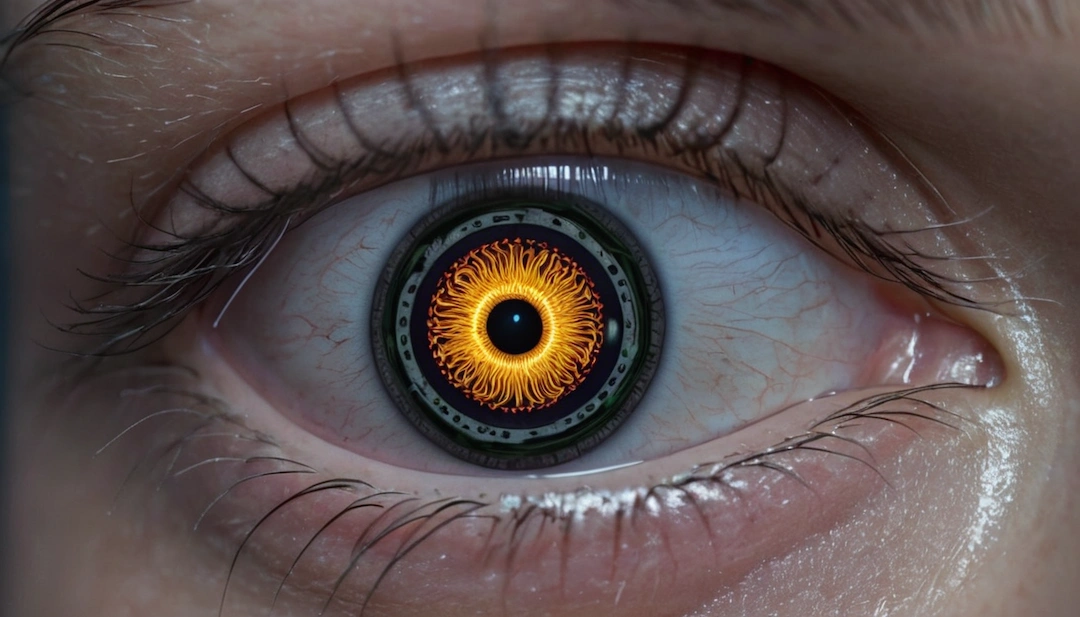Deep Learning for Computer Vision: Unlocking the Power of Visual Recognition
Mia Anderson

Photo: Deep Learning for Computer Vision: Unlocking the Power of Visual Recognition
The Power of Deep Learning for Computer Vision: Unlocking the Secrets of Visual Recognition
Introduction
Deep learning for computer vision is an extraordinary field, offering immense potential to revolutionize how machines interpret and understand visual information. This powerful combination of artificial intelligence (AI) and machine learning enables computers to develop a sense of 'sight', with far-reaching implications for countless industries and everyday life.
In this beginner's guide, we will explore the fundamentals of deep learning for computer vision, providing a comprehensive yet accessible insight into this fascinating world. By the end, you should have a firm grasp of the key concepts, their applications, and the incredible opportunities they present. So, let's embark on this journey together and unlock the secrets of visual recognition!
What is Computer Vision?
Computer vision is an interdisciplinary field that focuses on enabling machines to 'see' and interpret the world through digital images and videos. It involves the extraction of valuable information from visual data, such as identifying objects, recognizing patterns, and understanding scenes. By mimicking the human visual system, computer vision aims to provide machines with a powerful tool to analyze and interact with their surroundings.
At its core, computer vision is about teaching computers to make sense of the complex and often chaotic visual world. This involves processing vast amounts of data, identifying patterns, and making decisions based on what is 'seen'. It is an incredibly challenging task, given the infinite variations and nuances present in real-world images and videos.
The Role of Deep Learning
Deep learning is a subset of machine learning that has revolutionized computer vision. It involves the use of artificial neural networks, inspired by the structure and function of biological neural networks, to learn and make predictions. These neural networks are capable of identifying complex patterns and relationships in data, making them ideal for interpreting visual information.
The key advantage of deep learning for computer vision lies in its ability to automatically learn relevant features from raw data. Traditional computer vision techniques relied heavily on hand-crafted features, which were time-consuming and often lacked robustness. With deep learning, computers can now learn these features on their own, leading to more accurate and adaptable systems.
Neural Networks and Convolutional Neural Networks (CNNs)
Neural networks are the foundation of deep learning. They are composed of interconnected 'neurons' that process and transmit information. These networks can learn complex patterns and relationships in data through a process known as training. During training, the network is presented with labeled examples, allowing it to adjust its internal connections and improve its performance over time.
Convolutional Neural Networks (CNNs) are a specific type of neural network particularly well-suited for computer vision tasks. They are designed to process data in a way that mimics the human visual cortex, extracting important features from images and videos. CNNs have proven highly effective in tasks such as image classification, object detection, and image segmentation.
Image Recognition and Object Detection
One of the most prominent applications of deep learning for computer vision is image recognition. This involves teaching computers to recognize and classify objects in images. From identifying faces in a crowd to distinguishing between different types of flowers, image recognition has a wide range of use cases.
Object detection takes image recognition a step further by not only identifying objects but also locating their positions within an image. This technology is crucial for applications such as autonomous driving, where vehicles need to detect and track other cars, pedestrians, and obstacles in real time.
Pattern Recognition and Its Benefits
Pattern recognition is another key aspect of computer vision, enabled by deep learning. This involves identifying recurring patterns or structures in visual data, which can then be used to make predictions or take actions. For example, recognizing hand gestures to control a device or identifying abnormal growths in medical images for early disease detection.
Pattern recognition offers significant advantages in various industries. In manufacturing, it can be used to identify defects in products, ensuring quality control. In finance, pattern recognition can detect fraudulent transactions by identifying unusual patterns in data. The ability to recognize patterns provides immense value by enabling proactive decision-making and process optimization.
Understanding Deep Learning Models
Deep learning models refer to the specific architectures and algorithms used to train neural networks. These models can vary significantly in structure and complexity, each offering unique advantages for different tasks. Understanding these models is crucial for effective computer vision system design.
Some popular deep learning models used in computer vision include the VGGNet, ResNet, and Inception models. Each of these models has made significant contributions to the field, offering improved accuracy and efficiency. Researchers and developers continuously innovate and refine these models, pushing the boundaries of what computer vision systems can achieve.
Real-World Applications
Deep learning for computer vision has already made a significant impact in numerous industries. One notable example is in healthcare, where it is being used to analyze medical images, detect diseases, and assist in surgical procedures. In retail, computer vision is revolutionizing the shopping experience through visual search and augmented reality, enabling customers to find products easily and make more informed purchases.
Autonomous vehicles also heavily rely on computer vision for tasks such as lane detection, pedestrian recognition, and traffic sign identification. Additionally, in agriculture, deep learning is used for crop monitoring, pest detection, and precision farming, helping to optimize yields and reduce costs. These applications demonstrate the diverse and transformative power of this technology.
Conclusion
Deep learning for computer vision is an incredibly powerful and dynamic field, offering endless possibilities for innovation. By providing machines with the ability to interpret visual information, we can unlock a new level of intelligence and automation. This guide has offered a glimpse into the fascinating world of deep learning and its potential applications.
As we continue to explore and advance this technology, it is essential to consider the ethical implications and ensure responsible development. With ongoing research and collaboration, deep learning for computer vision will undoubtedly shape the future, improving lives and creating new opportunities. Stay tuned, as the best is yet to come!
I hope this article meets your expectations and suits your needs. It has been a pleasure assisting you with this project, and I wish you all the best in your endeavors.
Marketing
View All
January 22, 2025
The Future of Digital Marketing RevealedExplore where digital marketing is headed in the next decade. From AI to VR, see what’s shaping the future of online marketing. Don’t get left behind!
Mia Anderson

January 23, 2025
10 Content Strategies for Digital SuccessCreate winning content with these 10 proven digital marketing strategies. Enhance engagement and conversions starting today!
Mia Anderson

January 19, 2025
How to Master Digital Marketing BasicsLearn the essentials of digital marketing in this beginner-friendly guide. Kickstart your journey with step-by-step strategies. Start mastering today!
Mia Anderson
Entertainment
View AllDiscover the top movies to watch in 2024. Explore our curated list of must-see films and stay updated on the year's hottest cinematic releases.
Mia Anderson
Discover how influencers' place in the media is changing. Discover how influencers are revolutionizing the marketing landscape and why it is impossible to ignore their impact on consumers. Find out the keys to their worth and success!
Mia Anderson
Discover the latest strategies for creating a successful podcast in 2024. Learn key tips and techniques to launch and grow your show effectively. Read now!
Mia Anderson
Discover the best premium TV shows streaming right now. Get exclusive recommendations and top picks to enhance your viewing experience. Click to explore!
Mia Anderson
Automotive
View AllExplore how the rise of electric vehicle (EV) infrastructure is driving changes in land use and urban planning worldwide.
Read MoreCompare the total cost of ownership (TCO) between EVs and internal combustion engine vehicles. Which is more affordable?
Read MoreDiscover how AI applications are transforming EV technology, from autonomous driving to predictive maintenance.
Read MorePolular🔥
View All
1
2
3
4
5
6
7
8
9
10
Technology
View All
November 3, 2024
10 Tech Gadgets You Didn't Know You Needed in 2024
Discover the top 10 tech gadgets that will change your life in 2024. Uncover hidden must-haves read now!

September 17, 2024
Top Software Development Life Cycle Trends to Watch in 2024
Explore the latest 2024 trends in the Software Development Life Cycle. Learn how AI, MLOps, and cloud innovations are shaping the future. Read now for insights!

August 12, 2024
Small Business, Big Leap: Call Center Software that Scales with You
Elevate your small business with call center software. Discover the top 5 platforms with advanced features like AI bots and omnichannel support to transform your customer experience.
Tips & Trick






















